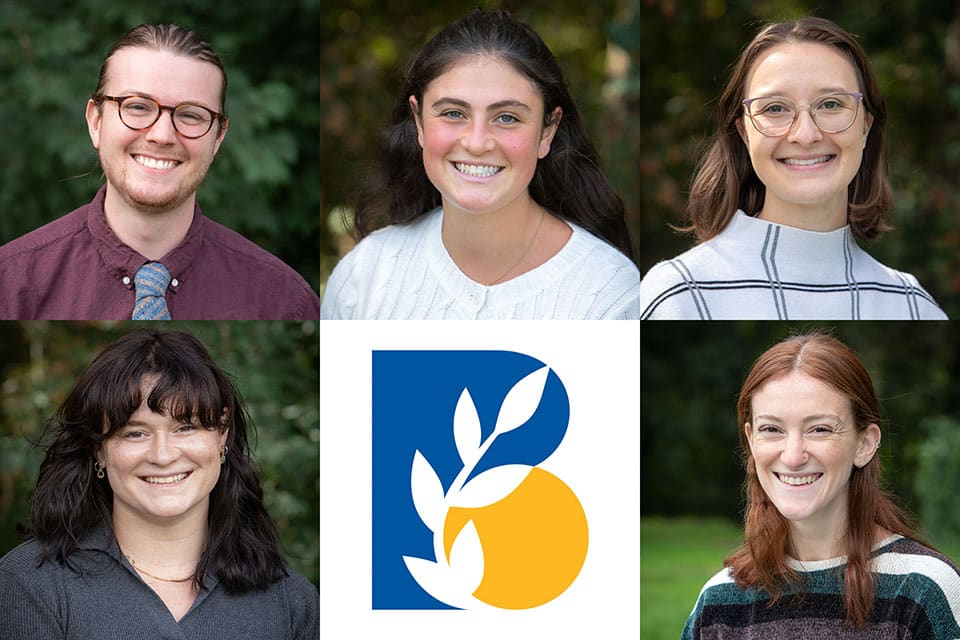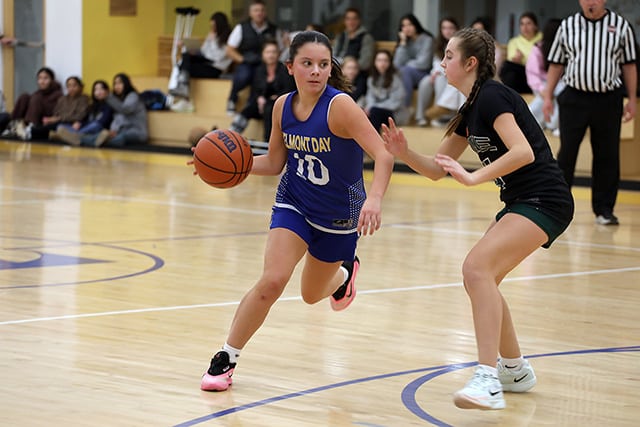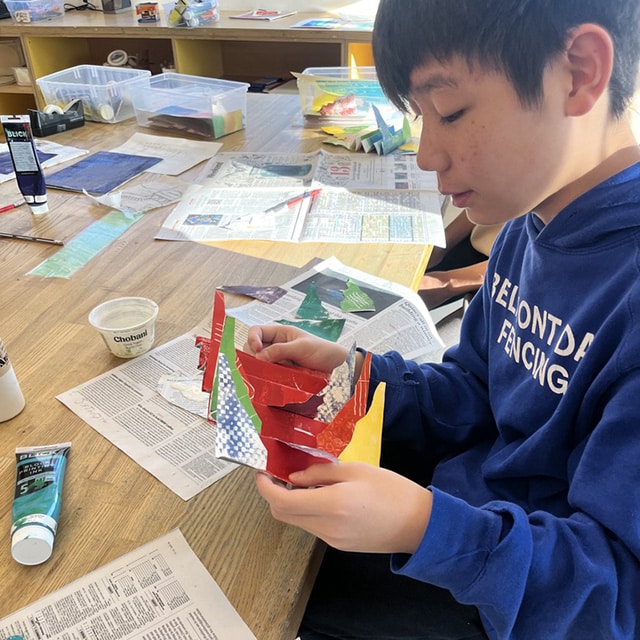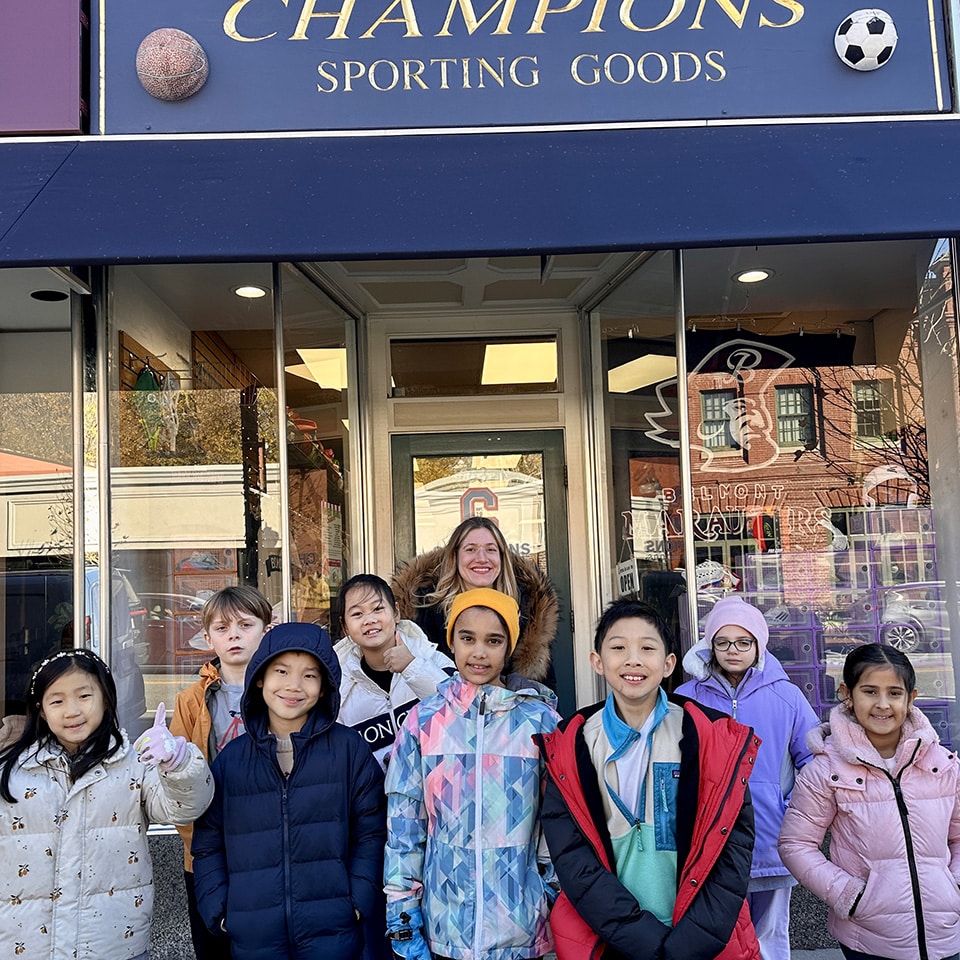Sixth Graders Dig Farm School
This week, sixth graders enjoyed spectacular weather, bountiful harvests, uplifting interactions with animals, and nourishing companionship as we made our annual visit to the Farm School in Athol. Condensing the traditional overnight trip into two separate day trips and traveling in separate cohort groups, students weeded, seeded, and prepared vegetable beds for the winter, herded and groomed cows, tended chickens, and entertained goats. We brought home bags full of peppers, carrots, raspberries, kale, broccoli, and cauliflower. Even though masked and working hard to remember our social distancing, we enjoyed a rare taste of a freer, restorative outdoor life that uplifted all of us.
– Dean Spencer, middle school social studies teacher and grade 6 adviser
Pre-kindergartners Explore, Learn Their Wooded Surroundings
We are lucky to have so much open land and woods around our school for children to explore. Within the woods is a place that pre-kindergarten has named Nature’s Playground. Like a playground, there are different features such as a rocky outcropping, a fallen tree trunk, a rotting log, stick houses, and saplings that define the space. For our students, Nature’s Playground is a destination and a part of the woods they know intimately.
Over the past few weeks, we have taken different paths in the woods and approached Nature’s Playground from different directions. Seeing children’s faces light up as they realize that they know where they are by the familiar features they recognize shows teachers that the children are beginning to build a mental map of the area. And much like explorers, with each new discovery, the map grows more detailed.
This week we discovered many limbs and a few trees that were blown down in last week’s storm. This changed the look of the landscape, as will snow later on. While exploring one area of the woods with several treetops lying on the ground, one child emerged through leafy branches, and exclaimed, “Look! It’s Nature’s Playground! Hey everybody, I found Nature’s Playground!”
– Alice Henry and Liza Ziering, pre-kindergarten teachers
Arts Update: Sixth Grade Artists Create Sculptures
After starting the intensive by creating free-standing sculptures from everyday materials—items from their crate of school supplies, and then with 30 index cards—the sixth graders in Ms. Juster’s and Mr. Segil’s cohorts continued with introductory building challenges as they worked to also create an original definition of sculpture. The Robert Gould Shaw Memorial in Boston inspired students next as they used an unlikely medium (be sure to ask a sixth grader in the class) to emboss different textures. After creating several embossings, students were challenged to then make a relief sculpture that honored or paid tribute to an important person in their life using the embossed pieces. Family members, famous musicians, and Ruth Bader Ginsburg were among those selected; the final relief pieces are as different and unique as the artists who created them. For the last week of this intensive, students will focus on creating wire sculptures inspired by the work of Alexander Calder and Ruth Asawa. While students are documenting their work daily by adding photographs and brief written statements into a Processfolio in their 3D Visual Art Google Classroom, some of their works are also on display in their cohort classrooms!
–Anne Armstrong, visual arts teacher and arts coordinator
Fifth Grade Shares Marketing Advice With LEGO
In fifth grade humanities, students have been talking about their identities. One specific part of identity that the students focused on was gender. Students were very passionate about this topic! Fifth graders read a story called Big Bob, Little Bob, and discussed how these characters broke gender stereotypes and showed ally behavior. Students looked at some gender stereotypes in the way LEGO markets to younger children, and then students wrote a letter to the company with suggestions about how they could improve their marketing. See an excerpt from one letter below:
“I do like that you made more sets that would appeal to girls in 2012 with LEGO Friends, but those sets have many things that also reinforce gender stereotypes like the jobs, the colors (mainly white, pink, blue, and purple), and even what the mini figures wear.”
– Vaniecia Skinner and Emma Nairn, grade 5 teachers
Fourth Grade Studies Greek Democracy to Compare to Today
For the past two weeks, fourth graders have traveled back in time 2,500 years to ancient Greece, the birthplace of democracy. We watched short videos, had several discussions, used a “brain dump” to take notes (both visually and in words), and voted like the ancient Greeks (which meant A LOT of us didn’t get to vote!). This week we began to make connections with modern-day democracy in the United States. How is it similar and different from that of the Greeks? Are these systems fair? Why or why not? What does “fair” mean anyway? We will wrap up our mini-unit on democracy next week by writing paragraphs about what we have learned and sharing what (if anything) we would change about our modern-day democracy. With this work as our foundation, we will set ground rules as a group for discussing the upcoming elections. And, while fourth graders are too young to vote in our state and national elections, they will get a chance to have their voices heard by becoming informed voters and opting to vote for the Massachusetts Children’s Book Award this winter.
– Lana Holman and Mary Norman, grade 4 teachers



